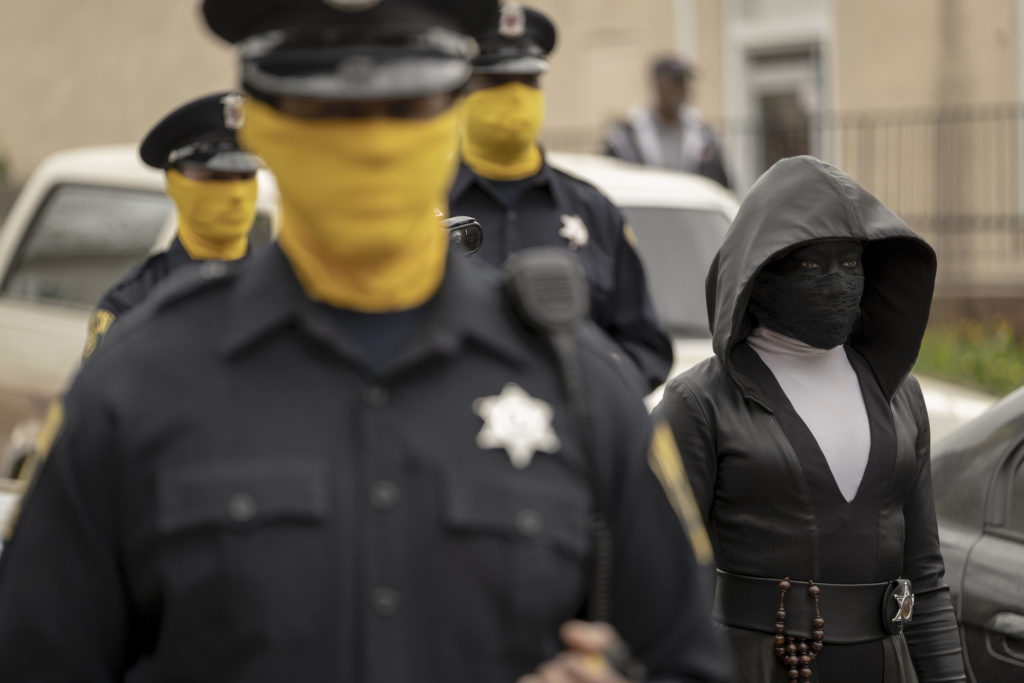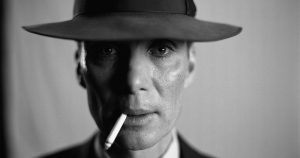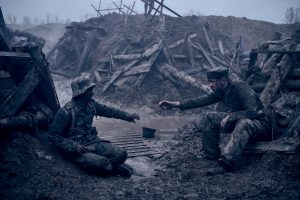The last episode of Watchmen aired December 15 on HBO. While the show — which is based on a graphic novel written by Alan Moore and published in the 1980s — addresses both race and power, it’s impossible to neatly fit the show’s writing into any existing political ideology. Some of the points the show makes are good ones, and some reveal the weaknesses of the show’s liberal politics, especially around issues of race and the role of the police. Ultimately, however, the show reveals the futility of left individualism in the face of an organized right that is backed by capitalism.
The original graphic novel takes place in an alternate history in which Richard Nixon has managed to remain president of the United States until 1985, but in the show, it’s 2019, and Robert Redford is the president (a cute little nod to Reagan’s acting background, though also a reference to Redford’s muddled political history, which has included support for both Obama and Trump).
The Tulsa Atrocities: Reparations and “Redfordations”
The show opens in 1921 during the “race riots” in Tulsa, Oklahoma, in which the prosperous community of Greenwood, also known as Black Wall Street, was brutally attacked and destroyed by Klansmen and other white supremacists who shot Black people, blew up their homes and businesses, and dropped explosives onto them from planes.

This event was not officially acknowledged until June 2001, when Congress passed the 1921 Tulsa Race Riot Reconciliation Act. Although a research commission in 1996 found that Tulsa police had worked hand-in-hand with the Klansmen, only modest reparations were awarded in 2010 to the victims’ descendants, in the form of scholarships and a vague promise to fund “development” in Greenwood. More recently, Michael Bloomberg spotlighted the massacre in a campaign stunt during which he lectured Tulsa residents on how much more difficult it is for Black people to amass wealth when faced with a racist government and police force (without acknowledging the level of violent oppression of the Black and brown youth of New York City he ordered during his tenure as mayor).
In the world of the show, the reparations are significantly greater, involving a large museum to commemorate the victims, voluntary DNA testing to identify whether a visitor is a genetic descendant of those killed or injured, and subsequent payouts (nicknamed “Redfordations”) to these individual descendants. The show’s protagonist, Angela Abar, is using the funding to open a bakery — albeit as a front for her identity as a cop. The importance of this government-funded admission of racist destruction and attempt to make amends is that it helps to set up this equitable alternate in which racism can be defeated by killing off a handful of antagonists. And the money is shown as helping create equity by helping the descendants build small businesses — there is no mention of investment in education or the funding of community organizations and services for Black people in Tulsa. Though fictional, it’s exactly the kind of plan Bloomberg would endorse.
“Blue Lives Matter!” Denying the Role of the Cops
One of Watchmen’s earliest scenes, which takes place in the present day, starts with a Black police officer pulling over a car, the driver of which he quickly realizes is a member of a white supremacist group. As it turns out, the police, in the show’s alternative universe, cannot access guns without undergoing a procedure in which they call into the station, explain that they are in imminent danger, and persuade a desk cop to send a signal to the car that releases the police officer’s gun from a locking apparatus.
And this is where the show begins to get most aspects of the police and their role in our society breathtakingly wrong.
The accountability process for accessing a gun is depicted as lethally bureaucratic, and it gets the good guy killed. The dispatch cop with the power to withhold the gun is slow to react, lackadaisically running through a long checklist of questions, and when he finally allows the gun’s release, the obviously old and temperamental device sticks. The traffic cop cannot release it, and so, predictably, the white supremacist shoots him in the head.
So what we see is a Black man murdered because there are too many requirements for him to access the gun he needs to protect himself against a rabid white supremacist. Hamstring the cops, says Watchmen, and white supremacists will snuff out human life right and left.
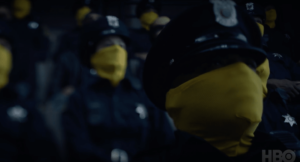
This ignores the fact that the police force, regardless of the race of individual cops, is consistently mobilized to defend white supremacists. At protest after protest, the cops make sure to hold back the left, corralling people in pens and even beating and arresting them, while there is great importance placed on making sure to protect the “free speech” rights of right-wing groups. For over a hundred years, police and even the laws themselves have taken great pains to protect both individual white racists and groups like the Klan. The “Blue Lives Matter” slogan, a direct response to Black Lives Matter which ostensibly includes Black police officers as well as white ones, declares the need for “protection” against Black people in general. Moreover, the funding for cops’ weapons has hardly been withheld, making Watchmen’s opening scene a bizarre, politically loaded, and jarring way to begin a show in which people of color struggle against white supremacist violence.
It is also an attempt to prep viewers to forget everything we know about the dangers of the police to communities of color and the force’s connection to white supremacy — presumably to set up an acceptance of what happens when the police’s predictably violent reaction, involving beatings and torture, ensues. The officer who beats these suspects is a Black woman, and these are white supremacists, after all. The fact that they deserve no sympathy makes it easy to forget that in real-life circumstances, this violence would be directed not at white people but at Black or brown people.
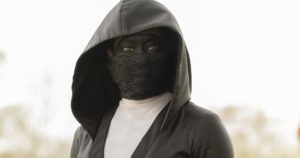
While the police supervisors are white, Angela is the show’s protagonist, and she is referred to only as “Sister Night.” She is literally a caped crusader, an action star dressed in faux black leather, including a long duster, and wearing a rosary next to her sheriff’s badge. She is an avenger, and thus we only see her attacking white racists, hardly the complete job description of a cop. The clear message is that this badass and diverse police force is the only thing standing between society and rampant right-wing terror.
Beware Cyclops; You’re on Your Own
We meet Will Reeves, Angela’s grandfather, who has hanged her best friend and superior officer, Judd Crawford. As Angela relives her grandfather’s past, we see the background of a man who had been secreted out of Tulsa as a child during the race riots and has become a well-meaning cop in New York in the 1940s. As in the opening scenes that take place in 1921, the show is comfortable reflecting and grappling with the racism of the past even though it struggles to confront that of the present.
The show does reveal how the police force takes great pains to hide its inherent racism — at one point, the man Reeves has arrested refers to him by a racist term, and the other (white) officers theatrically demand an apology, asking, “What did you call our brother officer?”
But no sooner does Reeves start asking questions about the secret “Cyclops” signs the white officers flash each other than the racist brutality of the police is put on full display. The officers who had pretended to defend him in the stationhouse unsuccessfully try to lure Reeves into the car for a drink. As he sees them drive off, there is a stomach-wrenching shot of the bleeding corpses of two Black men being dragged behind the car. The cops corner Reeves, beat him, and start hooding and lynching him. Just as Will begins to lose consciousness, they cut him down, telling him the next time he interferes in “white folks’ business,” they will finish the job.
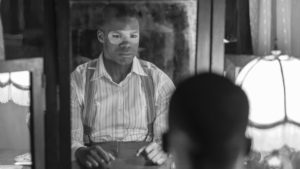
This is how the first superhero is born. Will Reeves becomes Hooded Justice, a vigilante who hides his identity to fight crime outside the police force, since the police force is interested only in protecting members of Cyclops. But even at this point, it’s not acknowledged that the role of the police is itself racist, but rather that there is another, clandestine organization hiding within the police directing its actions.
Reeves is recruited for a corporatized superhero grouping led by the wealthy Nelson Gardner. As part of the “Minutemen” — so named because they fight for some undefined “freedom” — Reeves is made to pose in front of disgustingly racist images in the service of the sale of war bonds, which is not surprising since, as a member of the ruling class, Gardner would doubtless have huge financial stakes in the war. When Reeves finally gathers enough evidence of the existence of Cyclops and is ready to share it with the press, Gardner immediately silences him. The publicity event confronts Will with the stark reality that “patriotism” serves the financial interests of war, and that those interests are opposed to racial justice. Racism is our iron-clad default, and it is most strongly embraced when it brings in funding in the interests of “America.”
And so he operates as both a Black cop and as a presumed-to-be-white vigilante for roughly 10 more years when it is revealed to him that Cyclops is developing and actively using mesmerism. During a movie showing at a Harlem theater, the film projector turns out to be using flashing lights and auditory messages to make the Black moviegoers violently turn on each other.
At this point in the show’s timeline, both Will and the viewer are completely acclimated to the role of the police. Since requesting help from the police would be both futile and lethal, Reeves calls Gardner and explains what has happened, expecting the rest of the team to be dispatched so that the members of Cyclops can be stopped.
But the response from Gardner is one of racist amusement; he smugly calls Reeves “ridiculous” and tells him that “this sort of thing isn’t really the Minutemen’s cup of tea. I’m afraid you’re going to have to solve Black unrest all on your own,” and then, just to add even more insult to injury, he tries to convince Reeves to come over for a quickie. And this is, of course, Gardner’s game that Will is playing. He holds the money and the power, and the “help” he wants to bring to Americans is that of financial support for an imperialist army.
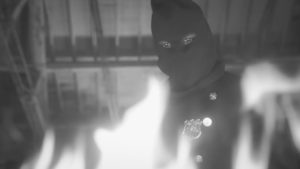
While this doesn’t shock Will, he is clearly enraged by the organization that is instigating violence in the Black community — perhaps a reference to the long history of the insidious ways that the U.S. government has done likewise in lower-income communities, specifically communities of color, for hundreds of years, most notably in the CIA-funded crack epidemics of the 1980s. And he successfully rampages through the warehouse where all the plans are being developed, kills all the members of Cyclops in the warehouse, steals the technology, and burns the building to the ground.
The police are infested with members of a secret racist organization, the aptly named Minutemen are engaged in white patriotism that reinforces racial oppression, but Will has triumphed. The show implies that this contained action was enough to end the mesmerism project and severely cripple Cyclops. Will was in the right place at the right time, and in a single night he has, at least temporarily, stopped racism in its tracks.
And yet Will is thoroughly alone and cannot stop every racist attack, cannot prevent the rebuilding of Cyclops, cannot save his own neighborhood, because he must still act alone. Even his once idyllic home life with his supportive wife and young son falls apart when he lashes out at his son in anger and frustration, and his wife takes the child and leaves him. The nuclear family can’t exist in a vacuum separate and apart from the anger Will feels as he is isolated by every group he has joined in an attempt to protect his neighborhood, his people, and his family.
Bourgeois Racism and the “Kavalry”
Cyclops is still going strong in the present-day Watchmen storyline, and what the show depicts most accurately is the way various classes of racists work together. We are introduced first to the 7th Kavalry, a group of exclusively rural racists who hide behind white masks and revere the violent, reactionary, and individualist character Rorschach from the graphic novel. These are the soldiers of the wider racist movement that not only reviles but focuses its ire on “Redfordations,” expressing resentment at every turn.
Meanwhile, the upper-middle-class contingent of racists is dripping with barely concealed scorn. Cyclops leaders tell the characters to whom they reveal themselves that they aren’t really racists but that they have to pretend to be in order to control the unruly hicks of the 7th Kavalry. They do whatever they can to hide the racism so readily displayed by the poorer community members. When a member of Cyclops finds out the first superhero was Black and asks why this was kept secret for so long, the FBI agent tells her, “White men in masks are heroes, but Black men in masks are scary. Thank God things have changed.” The Cyclops leader gives a wry smile as she says, “Thank God.”
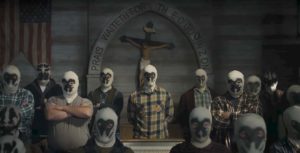
But this makes perfect sense as a reflection of the authoritarian ideas of the middle class and wealthy in America’s right wing. They are, on the one hand, not entirely comfortable with the boiled-down view of their racism, which is espoused by the working poor who give them political support, because they are on some level aware of how ugly it looks in its most bare form. On the other, they do actually believe in white supremacy, and without their Klan-esque foot soldiers, they could not instill the fear that makes up their authority. After all, if not for them, the “classy,” “reasonable” racists, all hell would break loose.
As the story reaches its climax, Senator Joe Keene declares, “You’re wrong about Cyclops. We’re not racists … We’re about restoring balance in those times when our country forgets those principles on which it was founded. Because the scales have tipped way too far, and it is extremely difficult to be a white man in America right now.” He then gives a long speech about how incredibly put-upon white people are with a Democrat as president:
“First he took our guns. And then he made us say sorry. Over and over again. Sorry for the alleged sins of those who died decades before we were born. Sorry for the color of our skin. All we wanted was to get cops in masks, take some power back, start ourselves a little culture war. And if we control both sides of it, then I ride in on a white horse, right into the White House.”
The original graphic novel depicted a period in which Nixon held on to the presidency for several decades, and what the fictional Senator Keene explains here sounds like a description of Nixon’s “Southern Strategy.” In an attempt to gain a foothold for the Republican Party in the southern United States during the 1960s and 1970s, party leadership knew that there was untapped potential in the wave of racist white anger against the end of Jim Crow and the beginning of enforced desegregation. The perfect way to galvanize people, the Republicans decided, was precisely the kind of “culture war” Keene casually talks about. Using this “top down” strategy, GOP politicians consciously appealed to racism to get and maintain power.
It also reflects the Republican presidential campaign of 1980, in which Reagan shifted the strategy slightly in an attempt to evade accusations of overt racism. It was Reagan who insisted on looking past race while developing the image of the “welfare queen,” insisting that Black people were taking advantage of the system. This in turn supported the idea that any economic measure that helped Black or brown communities would have to take something from white Americans, and this is exactly what we see in the more impoverished white communities of Tulsa who blame their financial problems on “Redfordations” awarded to Black descendants of the 1921 race riots. Cyclops is thoroughly orchestrating racial hatred to gain ultimate power.
The End of Racism?
In the end, a pharmaceutical tycoon uses a really big gun to blow up the entire leadership of the country’s biggest and most powerful right-wing organization, whose members are all in the same place as they make a bid for godlike powers. They get vaporized, literally, all at once. The heroic police officer and her family return to their house in safety, and their relief is not tempered by any sign that there is an existing threat they will have to confront later. The show has effectively reduced racism to good guys vs. bad guys, and the good guys win because those in charge of the bad guys are all dead. If only racism were that easy to beat.
In the universe of Watchmen, there were apparently no civil rights organizations, no left mobilizations, and no mass struggle in defense of the oppressed. The Vietnam War, a huge rallying point for the various mass movements of the 1960s and 1970s, did not end because of political force from below; it ended because a superhero with supernatural powers ended it. And so, through this erasure of a key moment in the history of mass struggle, the show insists that this police vs. racism struggle is all that exists.
But what the show gets right is its characterization of the far right wing. It is, and always has been, a group of powerful, well-armed, and well-organized racists who consciously use the economic struggles of the working class to maintain capitalism. The other sectors of the ruling class need to pretend they are fighting this right wing, but in the end, whenever the right is poised to gain even more power, no one appears to be on duty. And for the show’s writers, this leaves the lone superhero to do their level best to stop the world from exploding.


